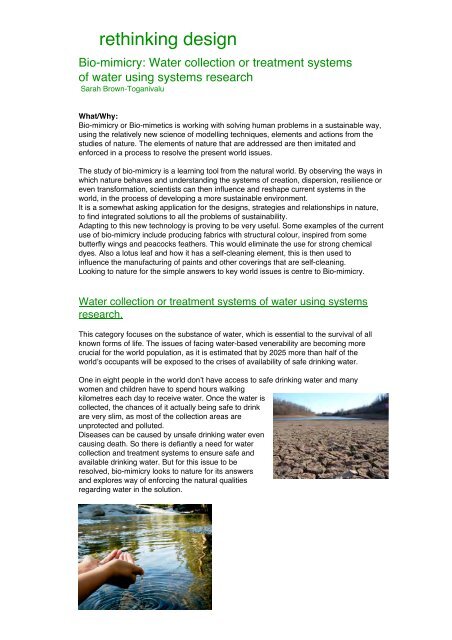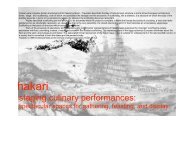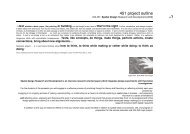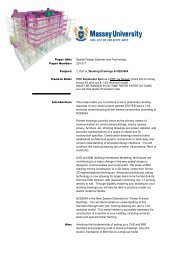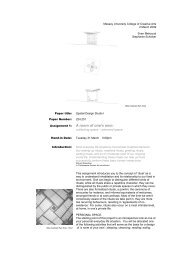rethinking design - Spatial Design@Massey
rethinking design - Spatial Design@Massey
rethinking design - Spatial Design@Massey
You also want an ePaper? Increase the reach of your titles
YUMPU automatically turns print PDFs into web optimized ePapers that Google loves.
ethinking <strong>design</strong>Bio-mimicry: Water collection or treatment systemsof water using systems researchSarah Brown-ToganivaluWhat/Why:Bio-mimicry or Bio-mimetics is working with solving human problems in a sustainable way,using the relatively new science of modelling techniques, elements and actions from thestudies of nature. The elements of nature that are addressed are then imitated andenforced in a process to resolve the present world issues.The study of bio-mimicry is a learning tool from the natural world. By observing the ways inwhich nature behaves and understanding the systems of creation, dispersion, resilience oreven transformation, scientists can then influence and reshape current systems in theworld, in the process of developing a more sustainable environment.It is a somewhat asking application for the <strong>design</strong>s, strategies and relationships in nature,to find integrated solutions to all the problems of sustainability.Adapting to this new technology is proving to be very useful. Some examples of the currentuse of bio-mimicry include producing fabrics with structural colour, inspired from somebutterfly wings and peacocks feathers. This would eliminate the use for strong chemicaldyes. Also a lotus leaf and how it has a self-cleaning element, this is then used toinfluence the manufacturing of paints and other coverings that are self-cleaning.Looking to nature for the simple answers to key world issues is centre to Bio-mimicry.Water collection or treatment systems of water using systemsresearch.This category focuses on the substance of water, which is essential to the survival of allknown forms of life. The issues of facing water-based venerability are becoming morecrucial for the world population, as it is estimated that by 2025 more than half of theworldʼs occupants will be exposed to the crises of availability of safe drinking water.One in eight people in the world donʼt have access to safe drinking water and manywomen and children have to spend hours walkingkilometres each day to receive water. Once the water iscollected, the chances of it actually being safe to drinkare very slim, as most of the collection areas areunprotected and polluted.Diseases can be caused by unsafe drinking water evencausing death. So there is defiantly a need for watercollection and treatment systems to ensure safe andavailable drinking water. But for this issue to beresolved, bio-mimicry looks to nature for its answersand explores way of enforcing the natural qualitiesregarding water in the solution.


